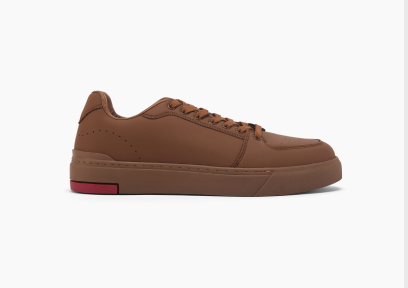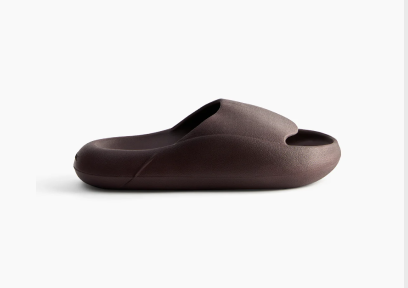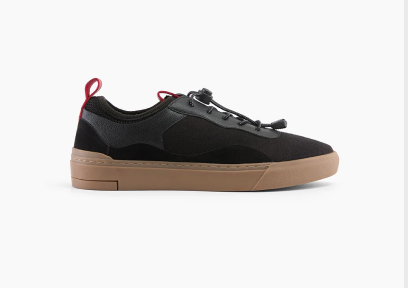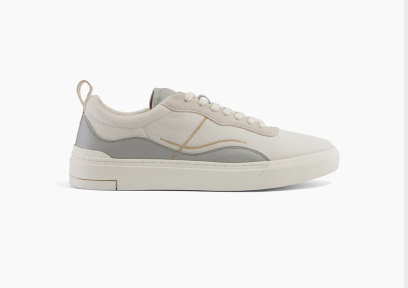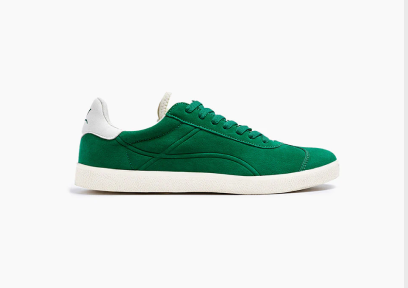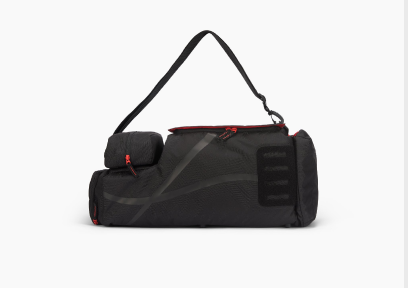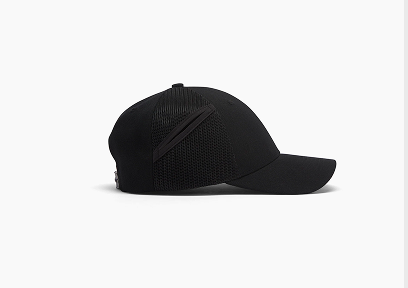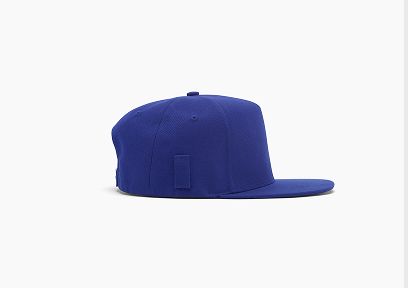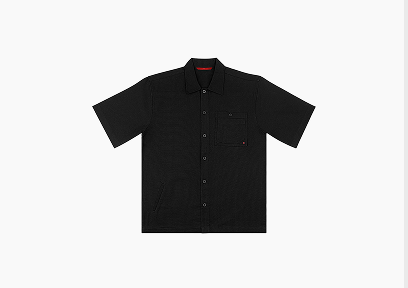Sneakers vs Athletic Shoes: What’s the Real Difference?

Sports shoes and sneakers give off very different attitudes. One leans into performance-driven engineering; the other leans into personal expression and everyday ease. Spend a week switching between the two, and a pattern emerges quickly: athletic shoes dominate when movement demands support, while sneakers bring an effortless vibe that works with nearly every casual outfit.
For anyone navigating fashion with a sharp eye and a practical mindset, knowing the difference between sneakers and sports shoes goes far deeper. Because “Sneakers vs athletic shoes” is a collision of fashion, biomechanics, comfort, and lifestyle choices.
Below is an exploration into how these two footwear categories diverge and how to decide which direction suits your day.
Sneakers vs Athletic Shoes: A Quick Comparison
| Feature | Sneakers | Athletic Shoes |
| Primary Use | Casual wear, lifestyle outfits | Sports, training, performance activities |
| Design Focus | Style, versatility, everyday comfort | Support, stability, cushioning, injury prevention |
| Construction | Softer materials, flexible build | Technical materials, reinforced structure |
| Foot Support | Moderate | High, sport-specific |
| Durability | Good for casual use | Designed for intense, repetitive movement |
| Weight | Usually heavier | Usually lighter for efficiency |
| Breathability | Moderate | Higher airflow for performance |
| Best For | Outings, daily wear, fashion | Running, gym sessions, sports training |
| Examples | Streetwear sneakers, lifestyle pairs, LUDIC’s low-top sneakers | Running shoes, training shoes, court shoes |
What Athletic Shoes Aim to Deliver
Athletic shoes are engineered for motion that taxes the body, e.g., running, sprinting, lateral cuts, quick pivots, jumps, heavy landings, and repeated impacts. Every component has an intention behind it. They’re created to enhance stability, protect joints, and support the foot across specific athletic demands.
- Running pairs rely on foam systems, spring-loaded midsoles, and shock-absorbent cushioning that spreads impact forces across the foot.
- Basketball designs raise the collar for ankle reinforcement and pair it with grippy outsoles that hold strong during aggressive turns.
- Tennis footwear favours lateral support and abrasion resistance due to constant side-to-side motion and hard-court friction.
- Training styles focus on balanced support since gym sessions shift between lifting, short sprints, and agility patterns.
Athletic shoes exist to meet performance demands first. They centre around biomechanics rather than aesthetics. You can walk in them, but their build leans toward intense movement, not casual wear.
Where Sneakers Stand in Contrast
Sneakers navigate a different world. They live where comfort, style, and personal expression intersect. Their primary function revolves around daily movement that doesn’t require athletic precision.
The difference between sneakers and sports shoes starts with intent. Sneakers prioritise ease, breathability, grip suited for sidewalks, and silhouettes that blend effortlessly with denim, dresses, chinos, or tailored streetwear. They’re less technical, more lifestyle-driven.
Materials shift as well: canvas, vegan leather, vegan suede, and rubber soles dominate sneaker construction. Cushioning stays present, but is not engineered at the same athletic threshold.
For fashion enthusiasts, sneakers are a playground for clean lines, expressive colours, sleek finishes, and silhouettes that complete an outfit.
Pro Tip: There is a difference between sneakers and casual shoes as well! If you want to carry fashion in a subtle way, knowing this difference can also make you stand out.
It is Athletic Precision vs Lifestyle Ease
Structure of Athletic Shoes
Athletic shoes rely heavily on layered construction:
- Midsoles built for impact distribution
- Ventilated uppers to stabilise the foot while allowing heat to escape
- Traction patterns crafted for turf, pavement, hardwood, or courts
- Targeted arch reinforcement
- Heel counters that lock the foot in place
- Shock absorption technologies unique to each sport
Their design choices protect the body. That’s why athletes trust them, gym-goers gravitate toward them, and fitness routines rely on them.
Structure of Sneakers
Sneakers take cues from lifestyle habits rather than sports science:
- Simpler outsoles with enough grip for urban environments
- Softer uppers: canvas, suede, or vegan leather
- Light cushioning centred on all-day comfort
- Streamlined silhouettes that complement casual wardrobes
For example, LUDIC’s sneakers bring breathable interiors, cushioned footbeds, and lightweight builds suited for daily use. The clean profiles fit effortlessly into streetwear and smart-casual outfits, while materials such as canvas or vegan suede give each pair a smooth, modern finish. They're wearable across many settings without signalling athletic intent.
Advice on Styling for Fashion Enthusiasts
The style equation in “sneakers vs sports shoes” depends on the occasion, the fit, and the attitude you want to convey.
Where Athletic Shoes Shine
- Gym attire
- Running shorts
- Leggings
- Sport jerseys
- Training outfits
Where Sneakers Take the Lead
- Denim
- Cropped trousers
- Streetwear fits
- Oversized tees
- Skirts and dresses
- Layered minimalist outfits
Sneakers vs Athletic Shoes for Walking
A common question is which option supports long urban walks. The answer is simple. Athletic shoes offer energy return and impact protection; however, they may feel stiff during slower-paced days. Sneakers designed with cushioned interiors and breathable builds feel smoother for extended casual walking.
Especially, LUDIC’s canvas and vegan leather options stand out here. Their soft footbeds and airy uppers adapt well to slow mornings, travel days, and long strolls without the bulk of performance footwear.
Sneakers vs Running Shoes: A Clear Divide
Running shoes operate in their own technical category. They’re tuned to forward motion, shock absorption, and stride efficiency. Sneakers cannot replace running footwear without risking discomfort or injury. Use running shoes for workouts, and sneakers for everything outside training hours.
Final Thoughts
So, the discussion “Sneakers vs athletic shoes” is rather important for fashion followers. It is a matter of choosing footwear that supports your movement and matches your style identity. Athletic shoes step up when your body demands support. Sneakers take the lead when your wardrobe sets the tone.
Fashion thrives on personal choice, and both footwear types hold their own. The difference between sneakers and sports shoes becomes clear once you recognise how each one fits into your rhythm. For style-driven movement, sneakers shape the look. For performance-driven intensity, athletic shoes anchor the experience.
FAQs
What defines athletic shoes?
Athletic shoes prioritise performance through cushioning, stability, and sport-specific support. They’re engineered for intense movement, repeated impact, and biomechanics required in training or competitive activities.
Are sneakers good for daily walking?
Yes. Sneakers with cushioned interiors and breathable uppers work smoothly for long, casual walks. They’re lighter and more flexible than performance footwear, creating a comfortable all-day experience.
How do sneakers differ from running shoes?
Running shoes optimise forward motion, shock absorption, and stride efficiency. Sneakers focus on style and everyday comfort, without the technical structure needed for running.
Can athletic shoes replace lifestyle sneakers?
They function well for workouts but don’t blend seamlessly into casual outfits. Athletic shoes feel bulkier and sport-focused, while sneakers match a broader range of clothing and social settings.
Which is better for casual outfits?
Sneakers integrate more naturally with denim, dresses, tailored streetwear, and smart-casual looks. Their clean silhouettes and softer materials support versatile styling that athletic shoes rarely achieve.



 The Sport Bag
The Sport Bag
 Circuit Shirt
Circuit Shirt
 Socks - Pack of 8
Socks - Pack of 8
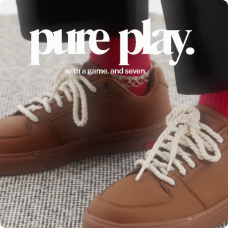 Nova Play
Nova Play





